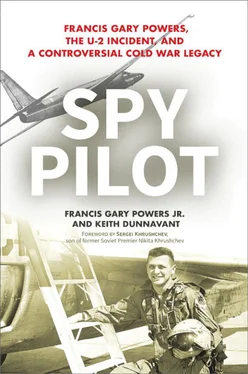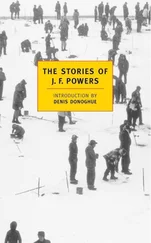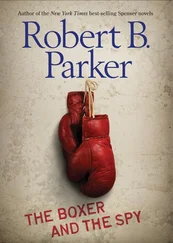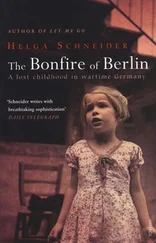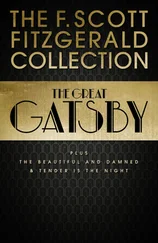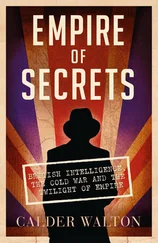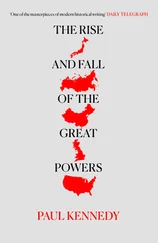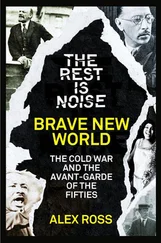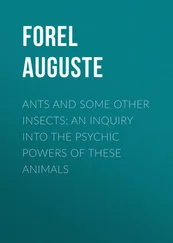So I contacted a doctor I knew in the agency. Called ambulance. Took her out. Couldn’t revive her. Just a few more minutes she would have been dead….
Went to hospital. Put a tube down her throat. Transferred her to Georgetown [Hospital], where she became alright, sometime after daylight. Got her out of danger….
This same man [from the agency] got word [somebody in the media] got word that she had attempted suicide, and I denied it. I hated to lie, but I did. Told him she had a bad oyster or something.
I think she saw what she was and didn’t like what she saw. 64
When I started trying to learn about my father’s life, Mom insisted that I not attempt to contact Barbara as long as my mom was alive. For whatever reason, she didn’t want that connection to my Dad’s previous life. I honored Mom’s wishes but always regretted that I never got the chance to talk with Barbara.
Of course, I will always be connected to my dad’s first wife through his 1960 220SE Mercedes convertible, which Barbara drove while Dad was in prison. The automobile remained in the garage at the Sherman Oaks house for several years after Dad died, fortunately avoiding serious damage when an earthquake destroyed the house in 1994. It belongs to me now. In recent years, I have spent about $12,000 on repairs, but it still needs plenty of tender loving care.
When I take the Mercedes out for an occasional spin, to keep it lubricated, I sometimes flash back to those tender moments when Dad would hold me on his lap and let me steer while we were heading up the last mile to our home in Sun Valley. Since it is the only thing Dad specifically left me in his will, it is very special to me.
Chapter Eight
THE LAST ECHO
On the morning of June 14, 2012, I walked into the Pentagon feeling the full weight of my family’s complicated history. It had not been easy living in the shadow of all those doubts. But I was not easily deterred by long odds or setbacks.
In the years after founding The Cold War Museum and becoming its first full-time executive director, I faced a series of formidable obstacles. While working full-time as the president and CEO for the Vienna-Tysons Corner Chamber of Commerce to support my family, I put in an additional 20–40 hours per week to promote the museum to civic clubs, military officials, and media outlets. I used my traveling U-2 Incident exhibit as a catalyst for a permanent museum, while searching and negotiating for artifacts, pitching for governmental and corporate funds, and spearheading an oral-history project involving Fairfax County public-school students.
“The whole point of The Cold War Museum was to educate future generations in what that time period was all about,” I told the media. 1
Embracing the concept, Virginia social studies teacher Patti Winch said, “It’s hard for our students today to understand the Cold War. I don’t think they connect with the fear factor.” 2
In 2006, after I had raised enough money to work for the museum full-time, the nonprofit entered into a partnership agreement with the Fairfax County Park Authority to build a permanent museum on the site of an old Nike missile-launch facility in Lorton, Virginia. We began signing up sponsors, but the agreement ultimately fell apart in 2009, when Fairfax County Park Authority walked away from the negotiating table after the museum had lined up donors who had pledged to write checks to get the facility up and running.
The donors wanted to see the lease signed first, and the park authority wanted to see the money in the bank. It was a catch-22, with neither side wanting to take the first step.
Local politicians and community leaders developed great hopes for the museum, which they envisioned as a significant tourist draw.
“I’m very disheartened,” said Irma Clifton, the president of the Lorton Heritage Society. 3“I think it was the perfect opportunity to tell the story of that part of our history where it actually happened.”
The disintegration of the deal was a crushing blow. My failure was plastered all over the front page of the Washington Post . 4
Thirteen years of my life had been invested in making this museum a reality. And we got so close. Then we were shot down. Seems to run in the family.
But then my telephone started to ring. That’s when I learned the truth behind the hackneyed PR phrase “There’s no such thing as bad press.”
Alerted by the news story, representatives from several other northern Virginia localities called to express interest in creating a home for the museum. My board and I eventually secured a deal with the Vint Hill Economic Development Authority in Fauquier County, which provided a facility suitable for renovation and very favorable terms.
With funding sources drying up in the wake of the severe recession, I resigned from my staff position, to preserve the organization’s finite resources. I became Founder and Chairman Emeritus and turned the operation over to the volunteers. No one was prouder than me to watch the new leadership, chaired by John Welch, negotiate the final hurdles of turning my dream into a reality.
Utilizing a facility once used by the NSA, CIA, and US Army Security Agency, The Cold War Museum opened in 2011 at what used to be known in intelligence circles as Vint Hill Farms Station, featuring an estimated $3 million in rare artifacts—including but not limited to a Stasi prison door; the US Postal Service mailbox used by spy Aldrich Ames to contact his Soviet handlers; a prisoner’s outfit worn by a member of the captured USS Pueblo ; a sailor’s uniform from a USS Liberty crewmember; and the largest known collection of civil defense memorabilia in the United States. The frequent tours of schoolchildren and history buffs validated my original vision, preserving and teaching about the milestone events of the epic clash between East and West.
By this point in my life, I was a family man with mounting responsibilities, learning to balance my personal life with the powerful urge to educate the world about my father and the Cold War.
Though I started out as a young man who always heard the voice of his mother ringing in his head, telling him to be skeptical of other peoples’ motives, I endeavored to embrace a certain amount of vulnerability. But my scars ran deep. I remained very guarded. Truthfully, I always felt like I had to hold something back, until I met Jennifer.
The beautiful daughter of a business associate, Jennifer Webber, came into my life in late 1995. She could sense that the business-like vibe I was projecting was clearly a defensive mechanism to keep people at a distance. On one of our first dates, she said, only half joking, “I don’t know whether to call you ‘Gary’ or ‘Mr. Powers.’” This was also because she was ten years younger. Had she called me Mr. Powers when we first met, I would probably not be writing about her now.
Jennifer remembers learning about Francis Gary Powers from her older brother, Bo, and feeling sorry for his parents. When she later studied the U-2 Incident in school, she never learned that he had survived the shoot-down.
When she was twenty, her mother asked, “Do you know who Francis Gary Powers is?”
Aware of the historical figure but still unsure of herself, she said no.
It turned out that her mother, Binnie, who served on the Downtown Fairfax Coalition’s Festival of Lights and Carols committee, knew the pilot’s son, who was the executive director of the coalition at the time.
“I couldn’t wrap my head around the son’s age, thinking his father died in 1960,” she said.
Sometime after this, during an event at the Old Town Hall, I noticed this beautiful blond standing next to my friend Binnie, who just happened to be Binnie’s daughter. I was immediately smitten, and one thing led to another.
Читать дальше
